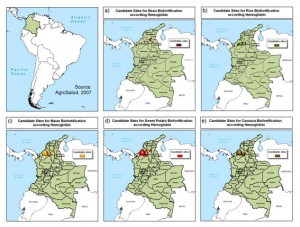The Oxford Real Farming Conference – January 5th 2010
A guest post from our friend Richard Sanders.
Every year in early January “the establishment” of British agriculture gathers in Oxford for the Oxford Farming Conference; two days of debate on their selection of the farming issues of the day. This year the massed ranks of land agents, company agronomists, financial advisers, supermarket buyers, grain traders (and some farmers) busied themselves with debate on the retirement age of farmers and market prices in a global economy.
Frustrated at the lack of engagement with the true failings of modern agriculture, a fringe event launched this year — The Oxford Real Farming Conference. Its organisers, including biologist and writer Colin Tudge and journalist Graham Harvey, are convinced that the Earth’s natural resources are easily able to provide a good, healthy diet for everyone living on the planet today — and everyone likely to be living on it 50 years from now and beyond. All it will take, they say, is an agriculture based on principles of sound biology rather than economic dogma.
“Current farming methods are clearly failing. They are over-dependent on fossil fuels; they damage soils and deplete scarce water resources; they degrade everyday foods; they reduce biodiversity and squander precious wildlife; they pollute our global environment. They are part of a global food system that is at the mercy of speculators and is every bit as precarious as the world banking system,” says Colin Tudge.
“Quite simply, high-input, industrial agriculture is incapable of reform. Rather than feed people, its aim is to serve the interests of global chemical, trading and investment corporations. Far from creating a secure supply of high-quality food, today’s agribusiness can be counted on to obstruct progress.”
As an alternative, the conference heard Professor Martin Wolfe of the Organic Research Centre extol the sustainable virtues of agro-forestry and composite cross populations of cereals over what has become “traditional” mono-cropping.
The call went out for the abandonment of energy-dependent nitrogen fertilisers; the replacement of rampant resource depletion with farming methods that work with rather than against eco-systems; and an end to the steady rationalisation and concentration of power in food processing and distribution.
“Feeding people is easy,” says Colin Tudge. “We must move to a recipe of a lot of plants, not much meat, maximum variety.”
By accident (or design?) the conference was held in the very same room (The Old Library of the University Church) that witnessed the inaugural meeting of the British aid agency Oxfam in 1942. That move was triggered by the need to supply food to starving women and children in German-occupied Greece. Auspicious or what?

